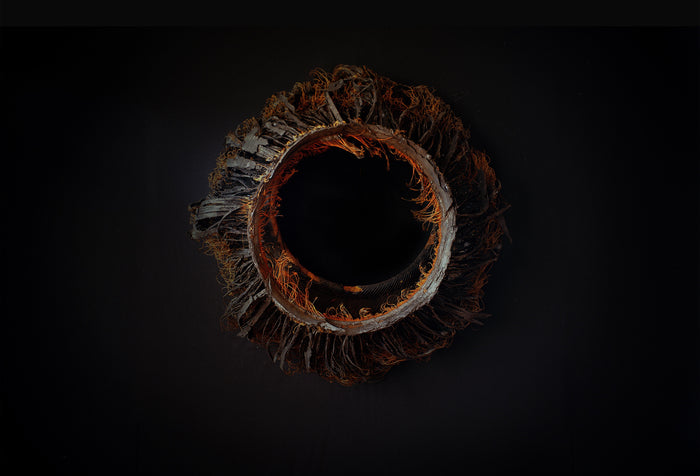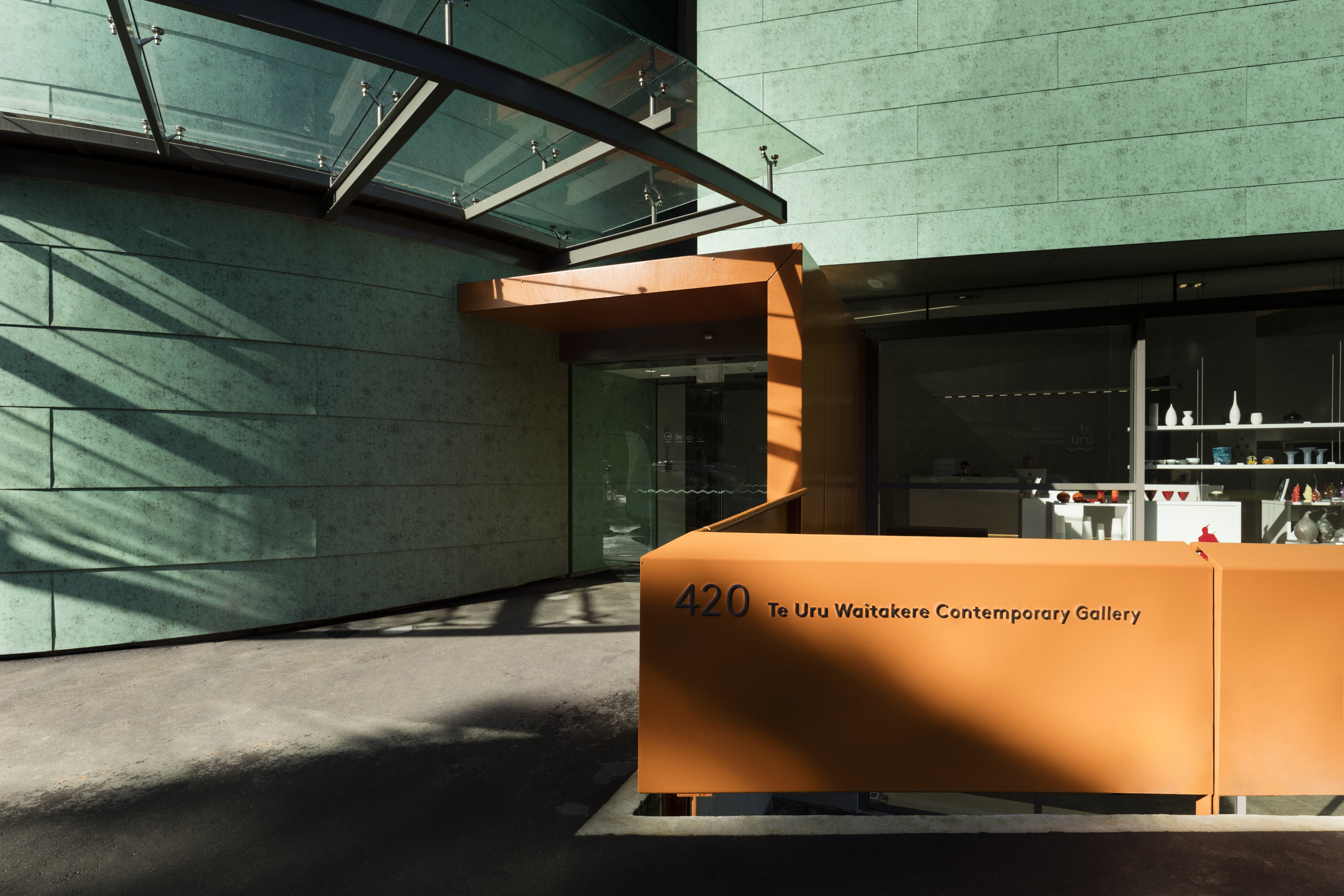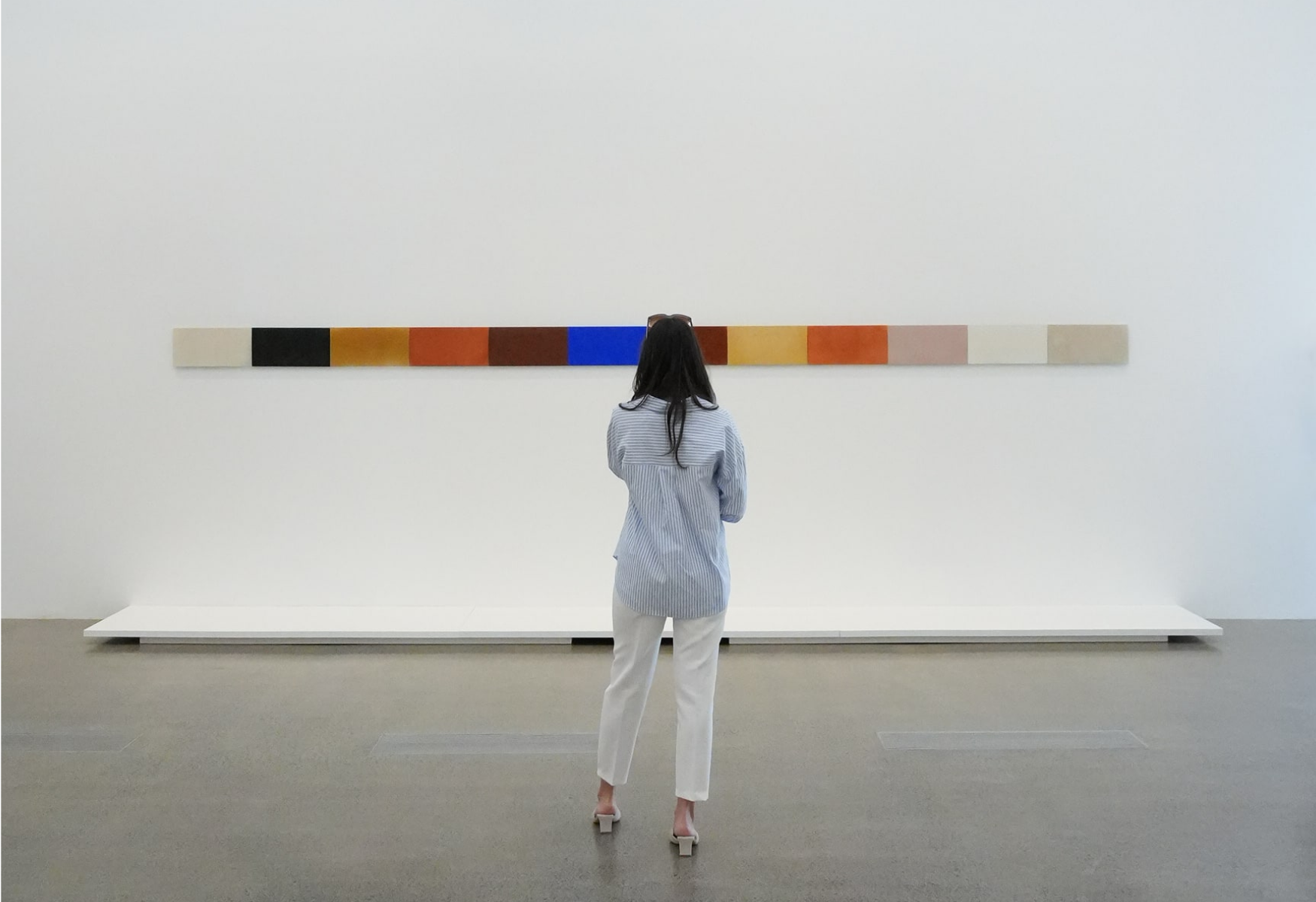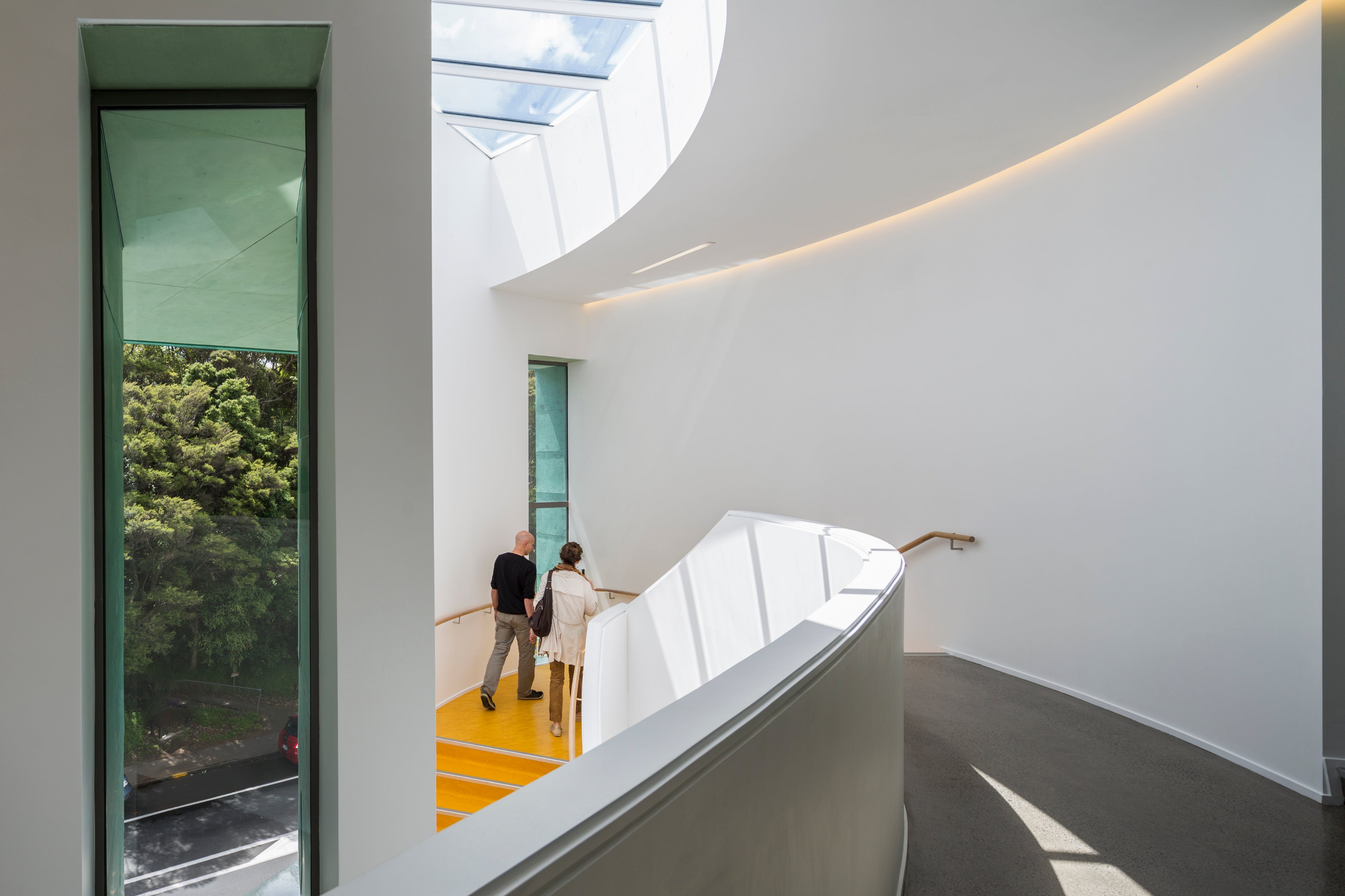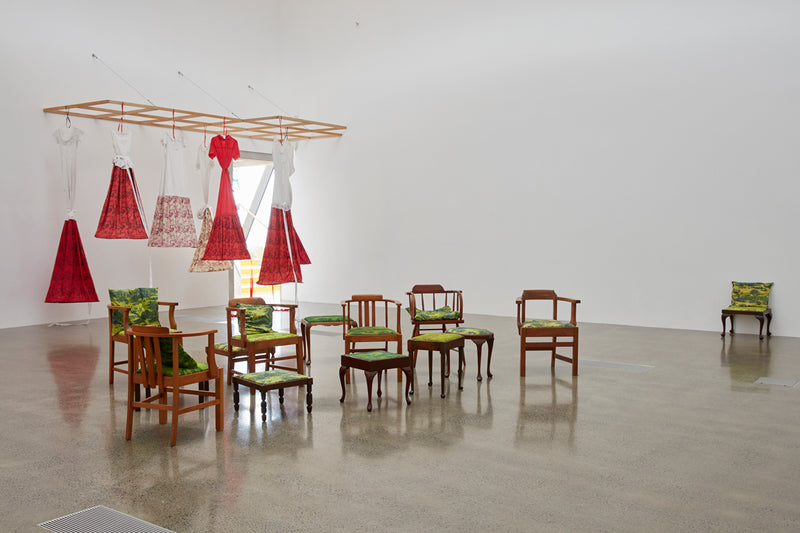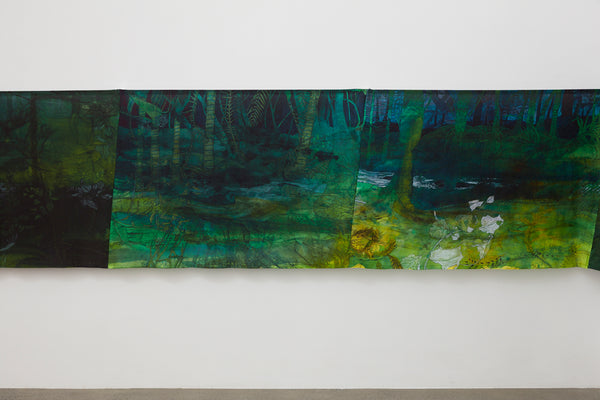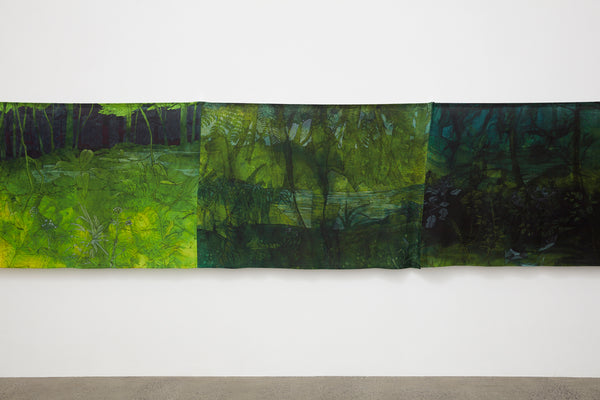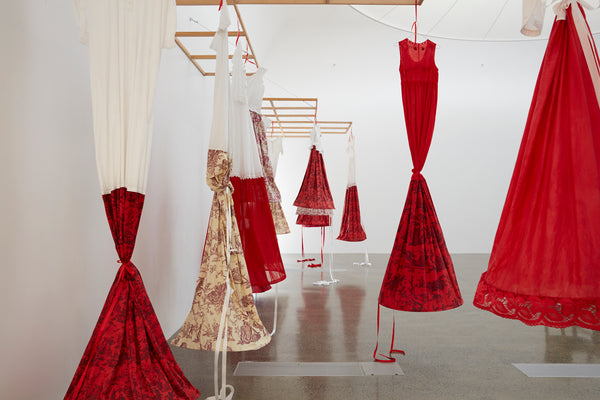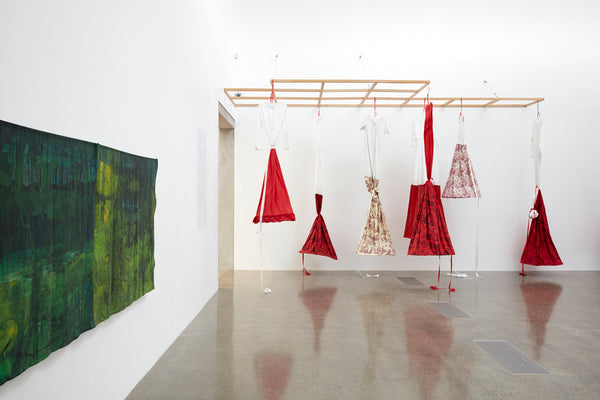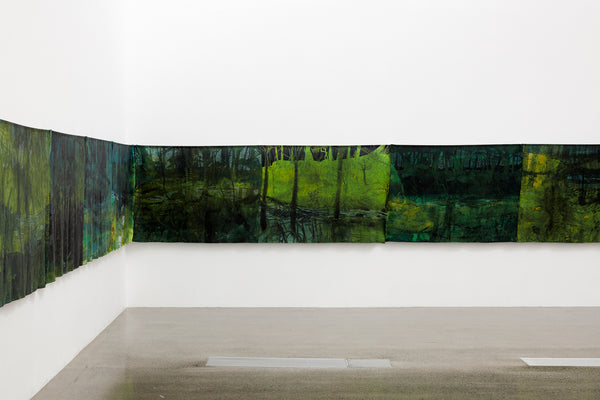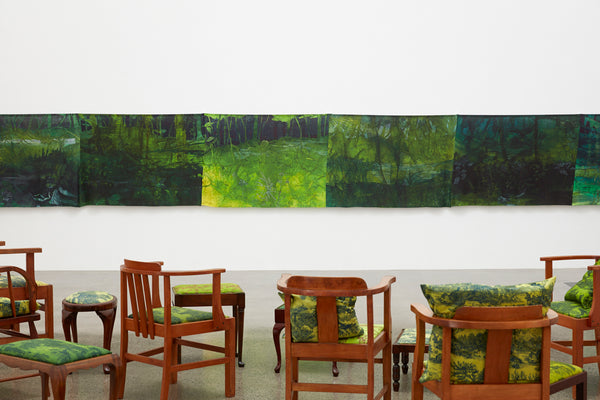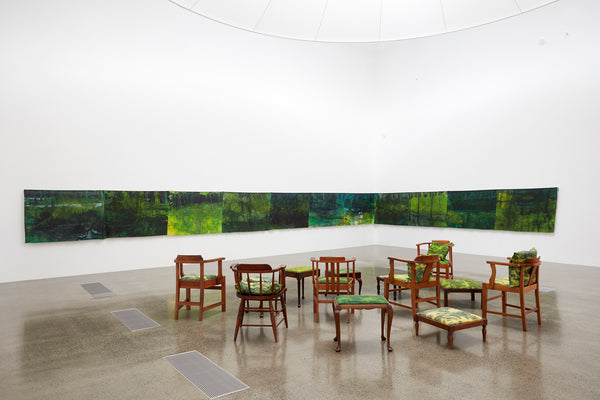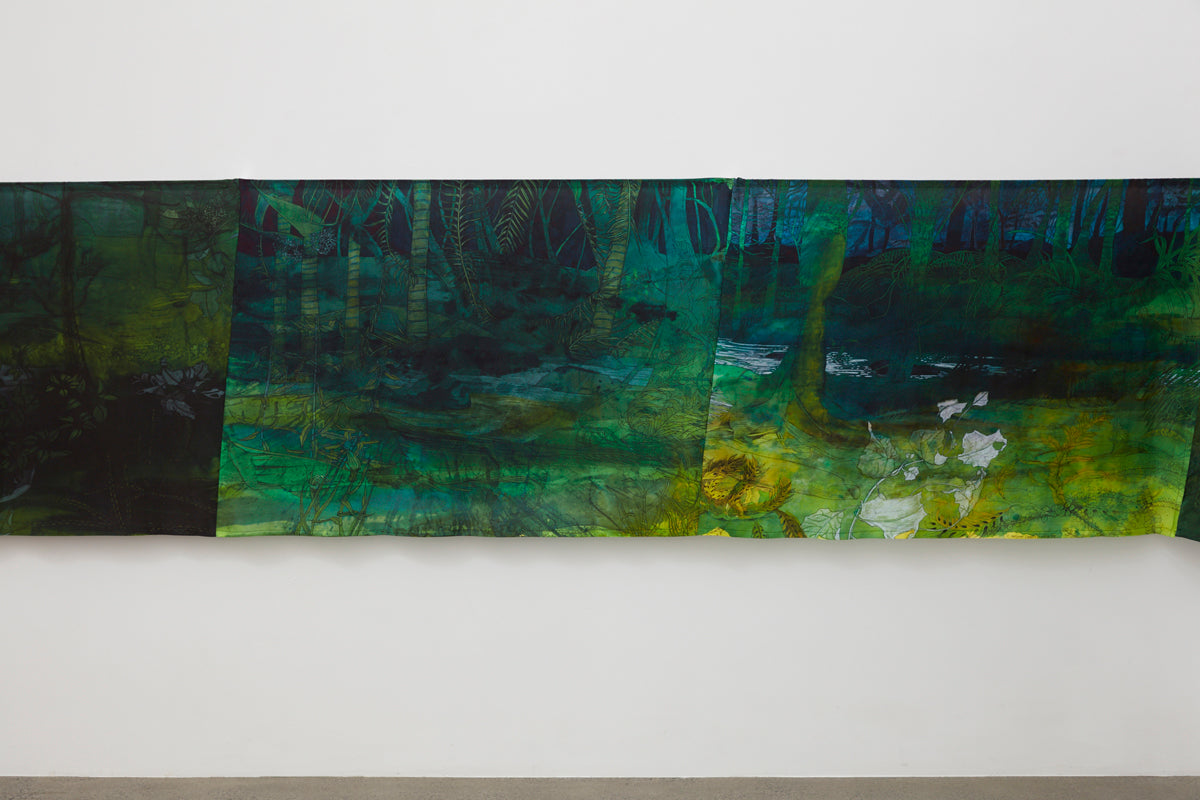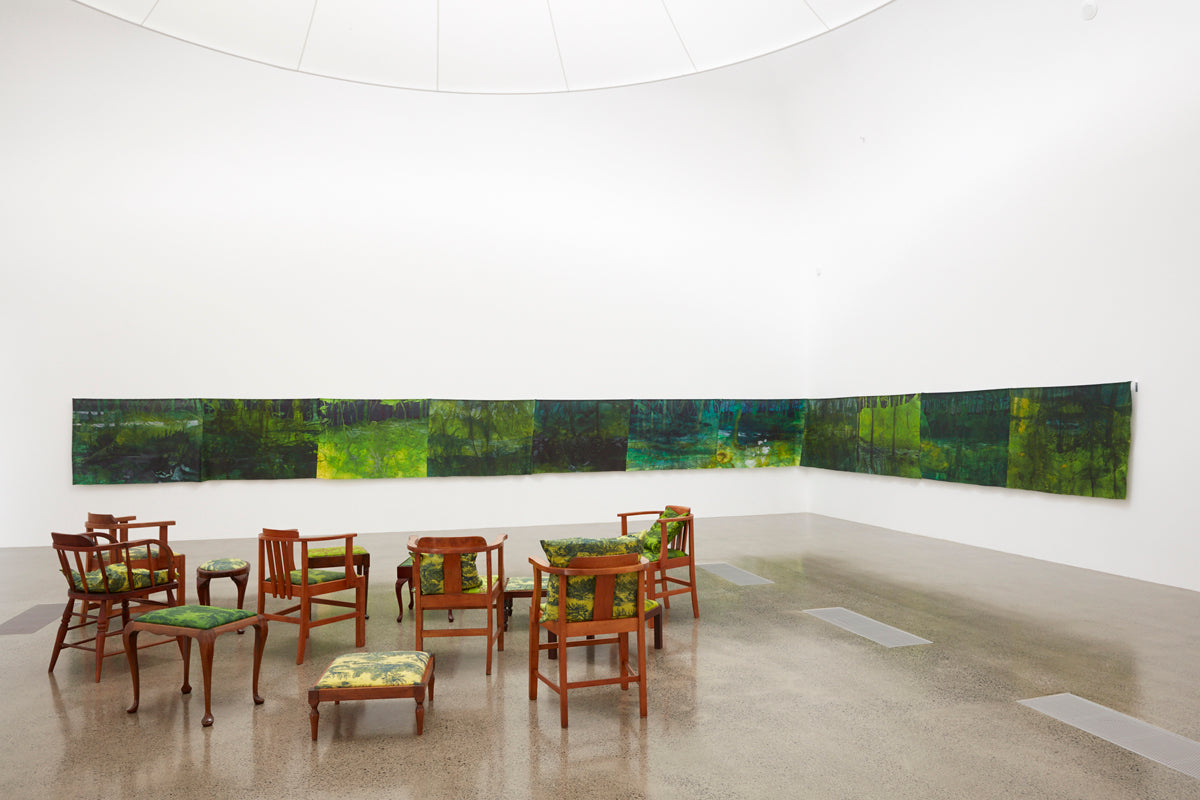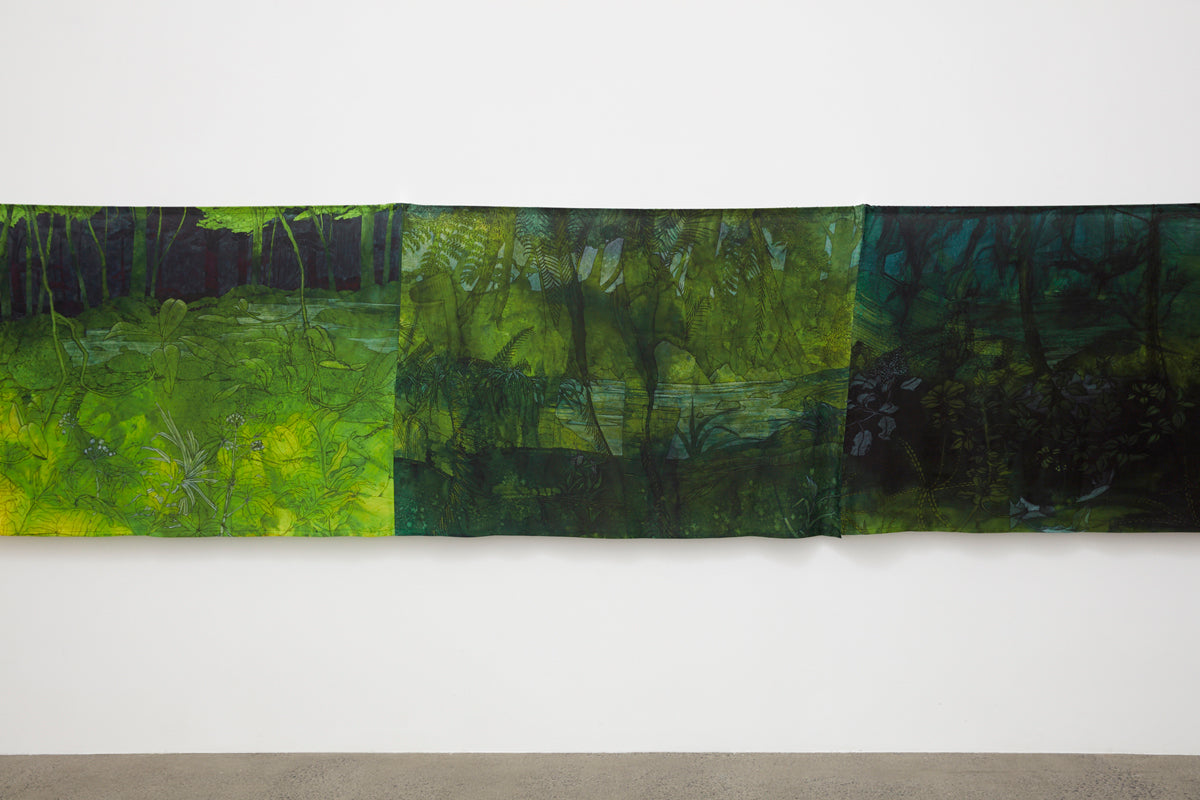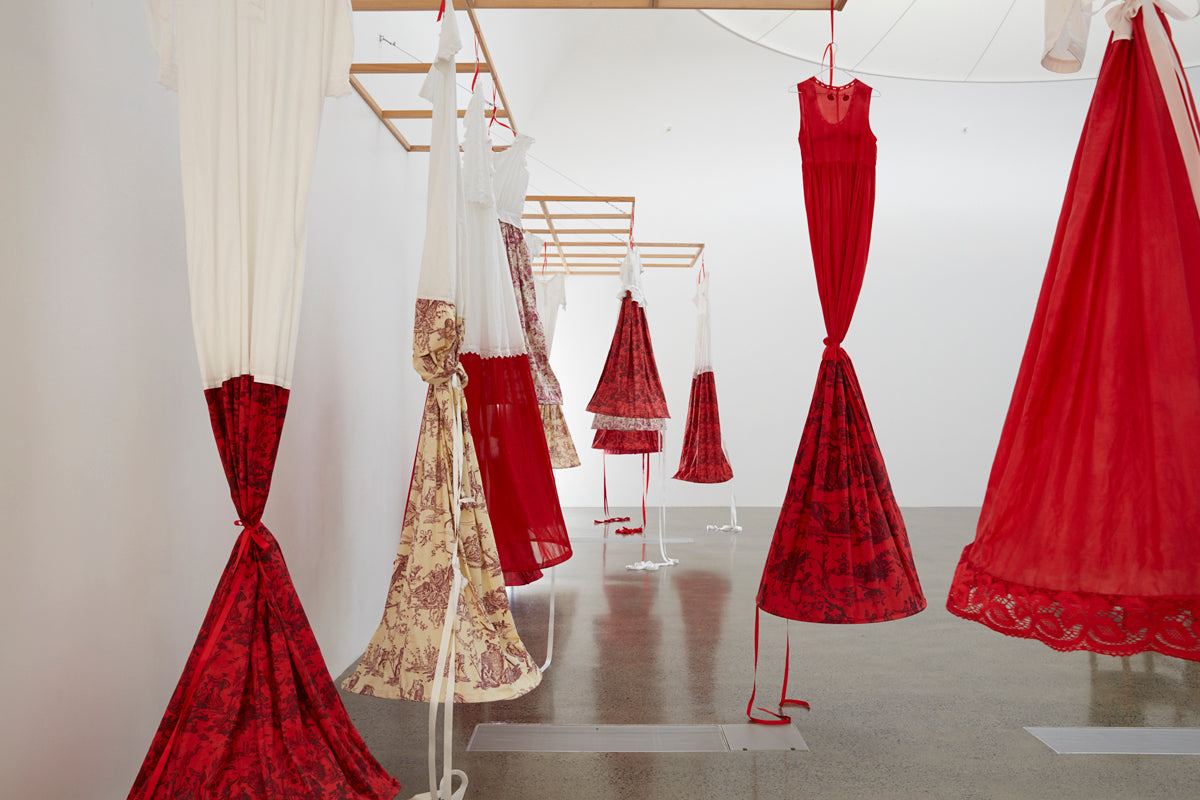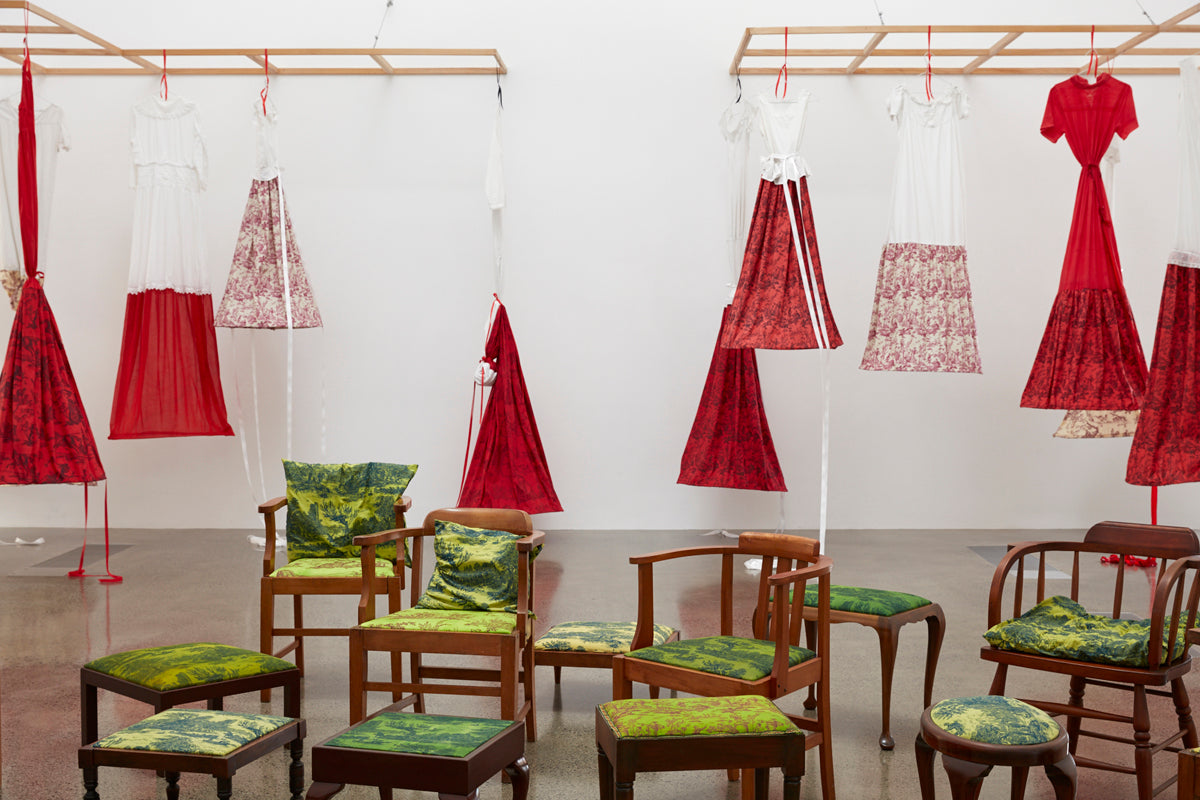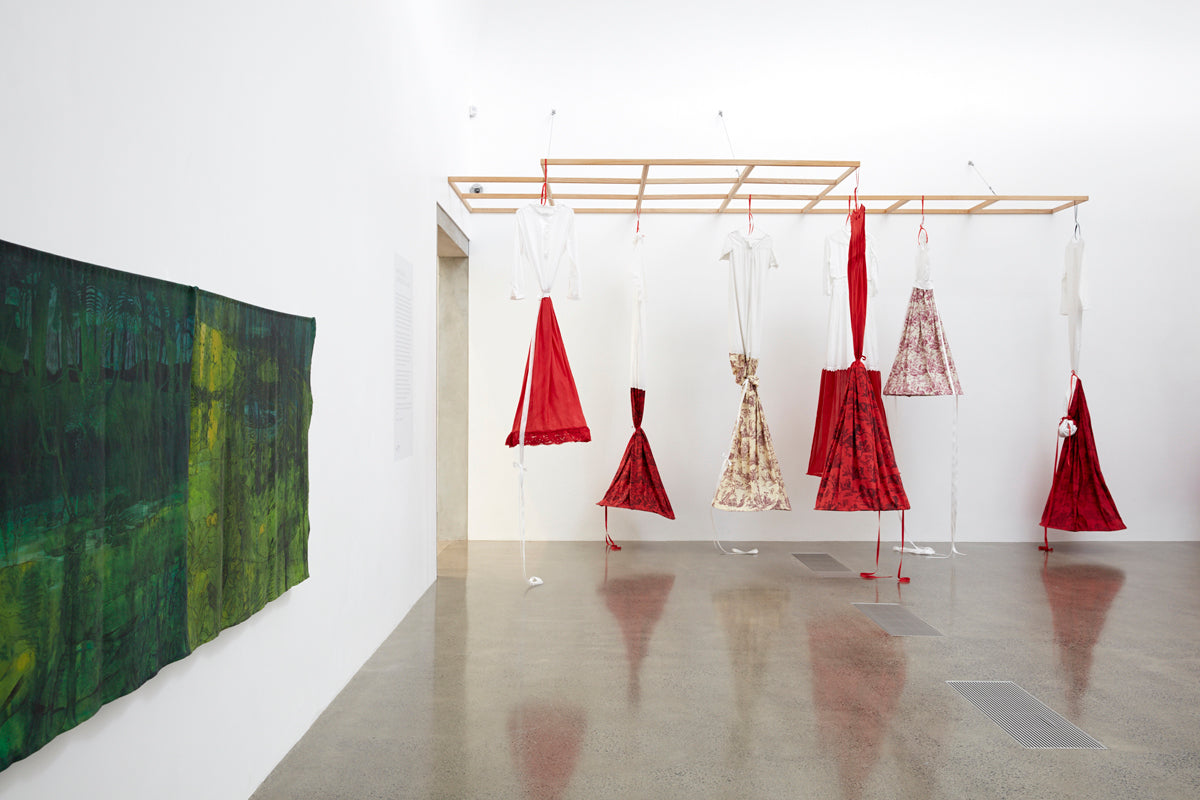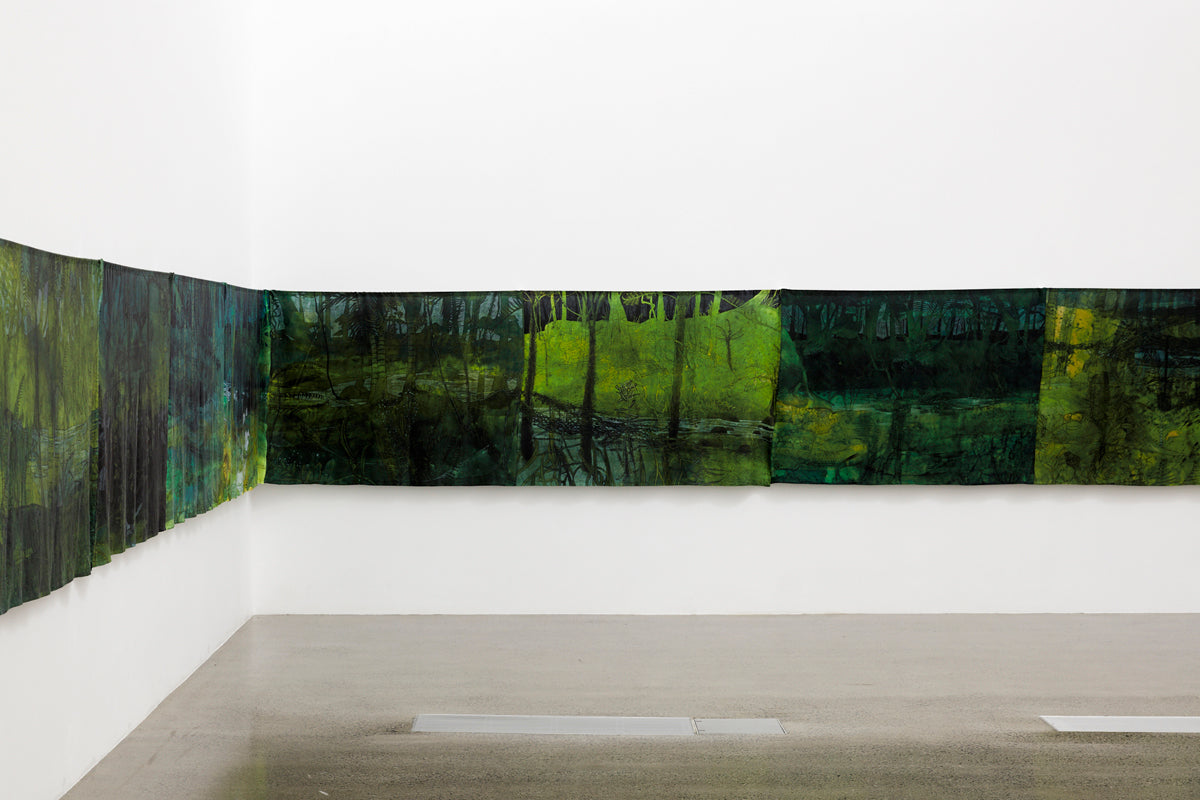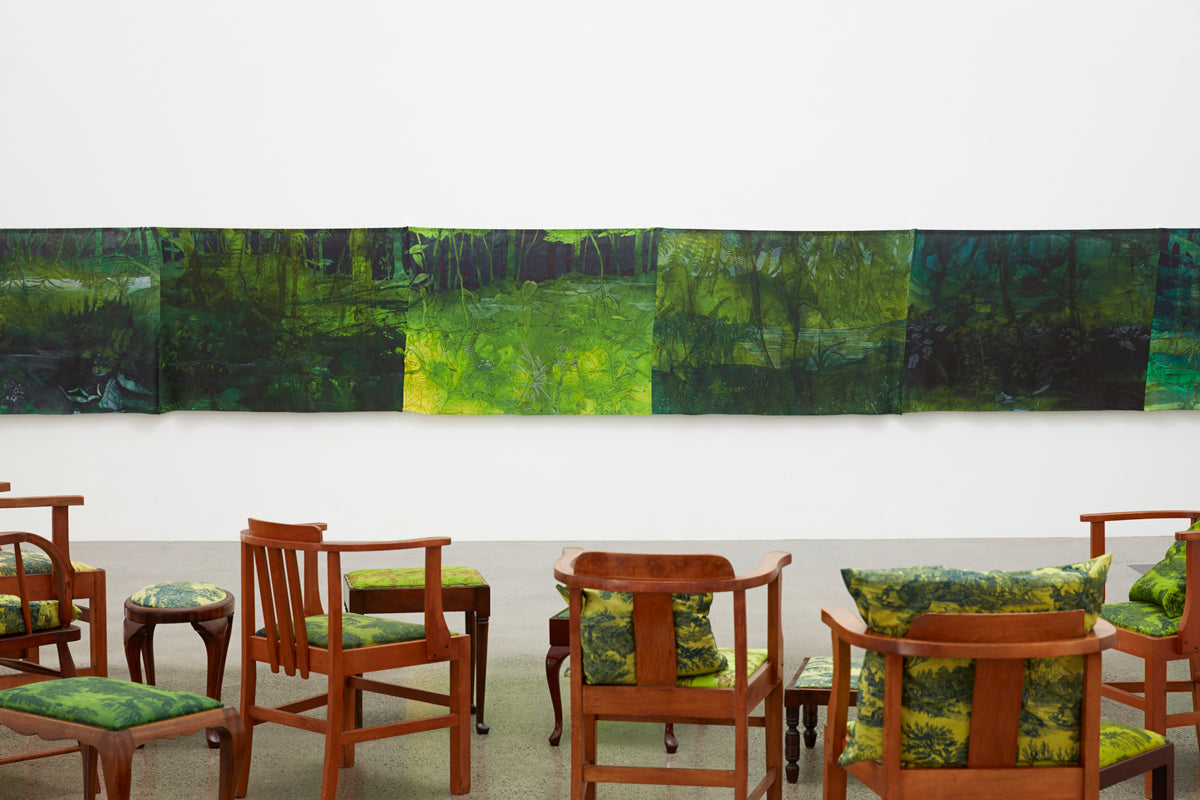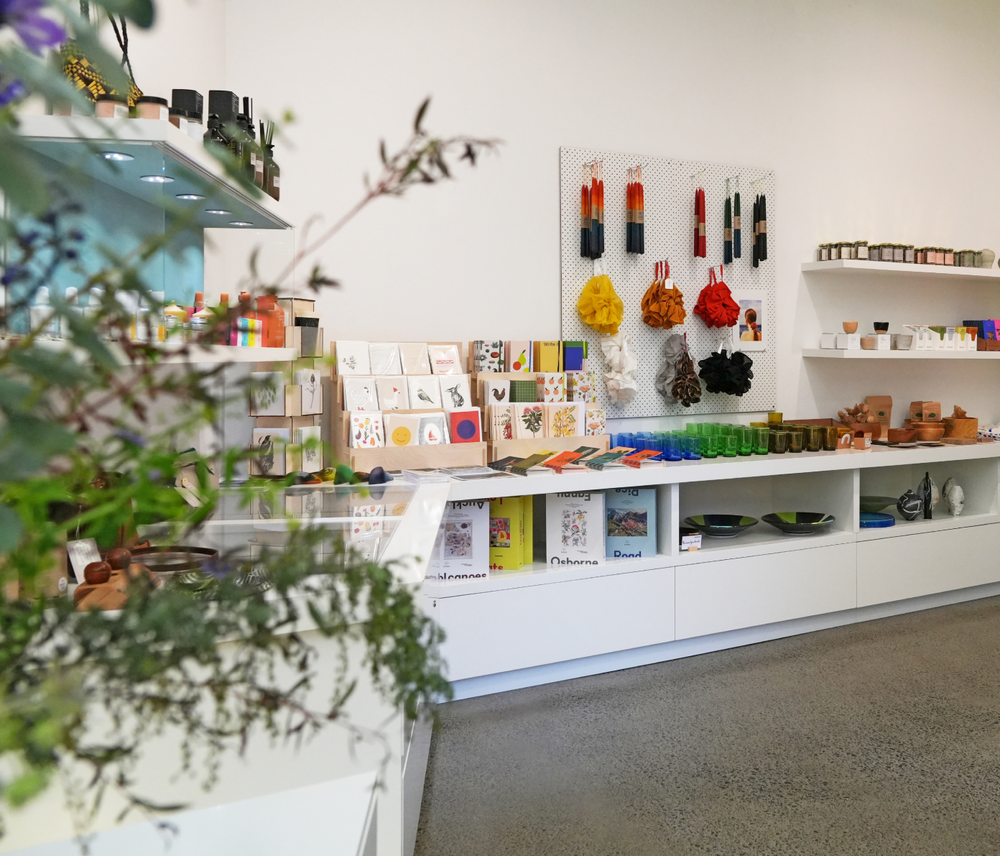Christine Hellyar: Looking, Seeing, Thinking
Time and location
26 August - 05 November 2017
Acclaimed Auckland-based artist Christine Hellyar has long been interested in how people see and depict the landscape. Working with a range of materials and formats, she presents here botanical drawings of a flooded Coastland Broadleaf Forest in the Waitakere Ranges, printed life-size onto silk alongside sculptural textile figures and upholstered furniture. Contemporary scenes are combined with historic materials and images to invoke polarities of colour, location, scale, period, drawing and sculpture, and fine or applied arts.
The silk drawings and printed textiles mix Pacific scenes with 18th century toile cloth to reference the history of the 18th century enlightenment era in Aotearoa. Figures are made from found clothing that recall shirts worn by the crew of James Cook’s ships, and women’s clothing that was used as an exchange item on Cook’s journeys.
The history of the Enlightenment in New Zealand has been a subject of Hellyar’s work since 2002, notably with her exhibition Mrs Cook’s Kete at the Pitt Rivers Museum in Oxford with Maureen Lander. Exploring histories of gender, Hellyar notes that Mrs Cook’s mother was an entrepreneur with a warehouse that provided much of the women’s clothing used for trade in the Pacific. Hellyar is particularly interested in what Europeans brought into the Pacific at that time, and also what they took, including the development of museum collections that map objects into hierarchies through museum processes of naming, sorting and display. Botanical art, still in use in museums today, was popular in the 18th century for scientific use and amongst textile makers, enthusiasts, amateur botanists and gardeners.
Hellyar’s exhibition exploits the natural, filtered light of the gallery, and its proximity to views of the Waitakere Ranges, reflecting the same light, colours, wind and rain to create a phsyiological experience that tests the relationship between the work and its original site. “I hope to make something beautiful and memorable that will encourage people to look more closely at art, and more closely at the bush of the Waitakere Ranges,” she says.
Hellyar has exhibited consistently in New Zealand and internationally since the 1970s and her work is in many important New Zealand collections.
Supported by Artweek Auckland

